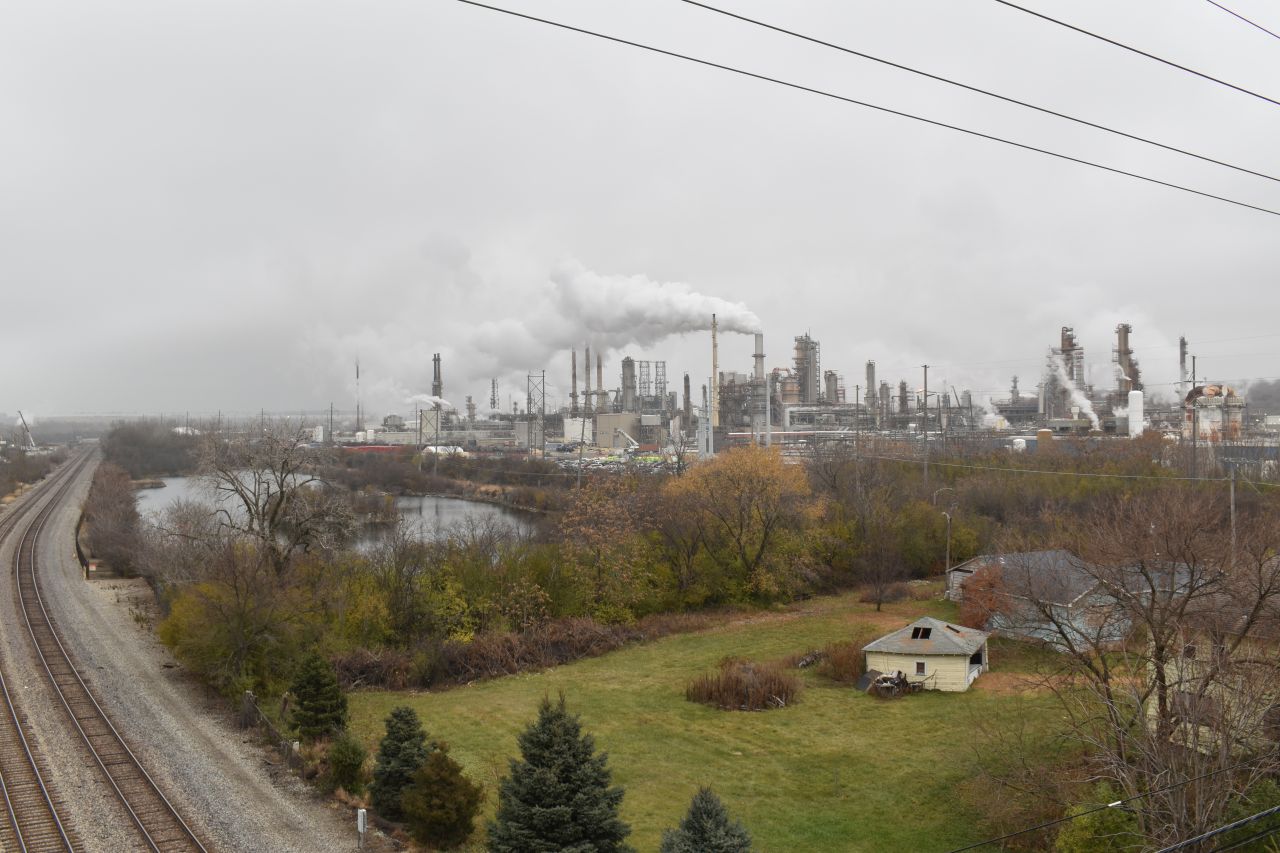Proposed LNG export terminals threaten 21,000 acres of wetlands, many in Louisiana

Southwest Louisiana is no stranger to natural disasters, including major storms such as Hurricane Rita. The storm devastated the region in 2005, killing 120 people, causing more than $18 billion in damage, and sweeping away more than 3,000 acres of wetlands.
But another slow-moving disaster is causing comparable amounts of damage to the state’s coastal wetlands, which are vital to Louisiana’s $2.4 billion fishing industry, tourism, and protection of communities near the shore. More than 6,000 acres of wetlands have or could be damaged or destroyed to make way for the construction of export terminals to ship liquified natural gas (LNG) to other countries.
“The amount of excavation being done is on this unbelievable scale -- it’s hard to even communicate,” said Scott Eustis, community science director for Healthy Gulf, a nonprofit environmental organization.
While LNG plants are being planned along several energy hubs along the Louisiana coast, Southwest Louisiana has become the hotspot. Calcasieu Parish, home to Lake Charles, and neighboring Cameron Parish have seen 10 LNG terminals built or proposed so far.
These projects in southwest Louisiana would destroy 1,848 acres of we acres of wetlands, according to an Oil and Gas Watch analysis of Federal Energy Regulatory Commission data. That’s about three square miles, or roughly the size of lower Manhattan. An additional 1,786 acres of wetlands would suffer temporary effects.
“At that scale, I think we’re starting to lose flood protection,” Eustis said.
According to Federal Energy Regulatory Commission data, 27 LNG export terminal construction or expansion projects that are proposed or already underway threaten 21,205 acres of wetlands – or 34 square miles, which is roughly half the size of Washington, D.C. Three currently operating terminals impacted an additional 487 acres of wetlands.
Despite the label of “temporary,” it can take years or sometimes generations for a formerly pristine wetland to return to its prior condition or deliver the same benefits of flood protection, clean water, and habitat it once provided to nearby residents and wildlife. In other cases, restoration efforts can be stymied by hurricanes and sea level rise. Ensuring that temporary impacts are truly temporary also requires regulators to hold companies accountable for restoration.

The FERC numbers likely underestimate the impact from the buildout of LNG terminals and pipelines, since they exclude any project that has not initiated the permitting process with the Federal Energy Regulatory Commission. That includes the Stage 5 Expansion Project at the Sabine Pass LNG terminal in Cameron Parish, Louisiana, which was announced last week.
The stakes of wetlands loss might be highest in Louisiana, where most of the state’s population and economy are in low-lying coastal areas south of Interstate 10. However, other Southern and Eastern states are also losing wetlands to LNG terminals, including Texas, Pennsylvania, Florida, Georgia, Mississippi, Maryland, and New Jersey. (Map of the LNG projects is below, with a full list of each project and the wetlands loss it would cause at the bottom of this report.)
In an ironic twist to this story, local taxpayers in Louisiana are subsidizing this destruction of wetlands in their backyards – and therefore protections of their homes from floods -- through tax breaks for LNG projects and other industrial expansions. Property tax breaks for industry in Louisiana’s Calcasieu and Cameron parishes alone add up to more than $1.6 billion each year, according to data compiled by Together Louisiana.
Wetlands are not only crucial to protecting coastal communities from floods and storm surges. They also serve as nurseries for fish, crabs, and shrimp – all major parts of Louisiana’s commercial and recreational fisheries. Shrimping alone employs 15,000 people with an annual economic impact of $1.3 billion, according to one industry trade group.
“Louisiana is known for having seafood, and the seafood comes from the wetlands,” Eustis said. “They need the wetlands to go from small, little guys to big, fat fish.”
The oil and gas industry’s impact on the Louisiana coast started long before the U.S. began shipping large volume of natural gas abroad. The state has been losing coastal wetlands since at least the 1930s, with more than 2,006 square miles, or 1.2 million acres, disappearing between 1932 and 2016, according to the U.S. Geological Survey.
But even some indirect causes of coastal loss are still deeply connected to the oil and gas industry, said Naomi Yoder, staff scientist with Healthy Gulf. These include rising seas due to climate change and sinking of land because of the withdrawal of oil, gas, or water, a process known as subsidence.
“There’s this tendency for people to not mention oil and gas but mention all of the other climate change effects that are contributing to wetlands loss,” Yoder said. “Sea level rise and subsidence are a direct result of the oil and gas industry.”
EIP Research Manager Alexandra Shaykevich and GIS Analyst Louisa Markow performed the data analysis and records research for this report.















